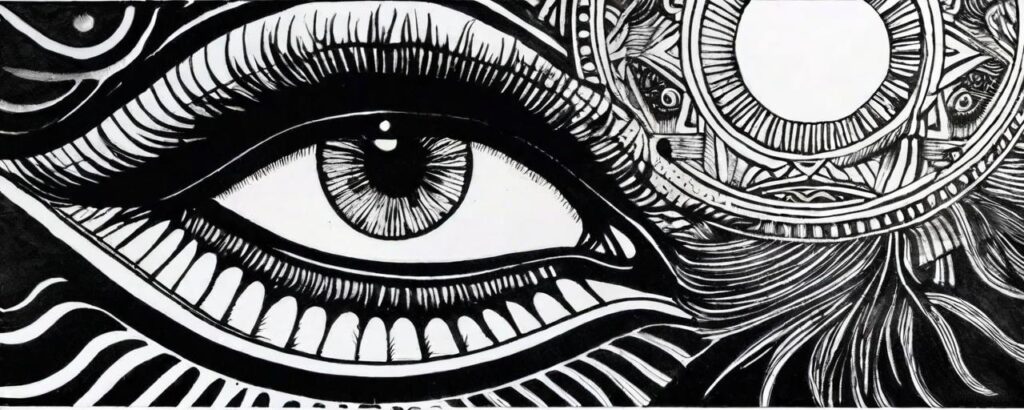Tarot card reading has long been a subject of fascination, mystery, and skepticism. Some view it as a powerful tool for insight and guidance, while others dismiss it as a mere scam, relying on vague predictions and ambiguous interpretations. The debate surrounding the legitimacy of tarot card reading is complex, encompassing beliefs, personal experiences, and cultural influences. This article aims to explore both perspectives, dissecting the practice to uncover its nuances and shedding light on whether tarot card reading is legitimate practice or is it indeed a scam.
Understanding Tarot Card Reading
The first section delves into the foundations of tarot card reading, tracing its historical roots and evolution. Tarot cards, initially used as playing cards in the 15th century, transformed into tools for divination and spiritual guidance over time. Understanding the symbolism embedded in each card and the intricate spreads used during readings is crucial. Moreover, exploring the different approaches—psychological, spiritual, or intuitive—employed by tarot readers provides insight into the diverse methodologies used in this practice.

Understanding Tarot Card Reading involves exploring its historical origins, the symbolism behind the cards, the structure of a typical tarot deck, and the methodologies employed during readings.
1. Historical Evolution
Tarot cards began as playing cards in the 15th century, originating in Europe. They evolved from being a simple card game into a tool for divination and spiritual guidance. The exact origins are debated, but the cards gained popularity in occult circles during the 18th century, with the advent of esoteric societies later on in the 19th century like the Hermetic Order of the Golden Dawn, which incorporated tarot into its teachings.
2. Symbolism and Structure
A typical tarot deck consists of 78 cards divided into two main sections: the Major Arcana (22 cards) and the Minor Arcana (56 cards). Each card in the deck holds symbolic imagery, often depicting archetypal figures, elements of nature, or universal concepts. The Major Arcana represents significant life themes or spiritual lessons, while the Minor Arcana focuses on day-to-day experiences and events.
3. Interpretation and Spreads
Tarot readers interpret the cards based on the symbolism, imagery, and their intuition or acquired knowledge. They use various card spreads, arrangements that dictate the position and meaning of each card in a reading. Common spreads include the Celtic Cross, the Three-Card Spread, and the Past-Present-Future spread. The position of the cards within the spread and their relationships to each other influence the interpretation.
4. Approaches to Reading
Tarot reading can be approached from different perspectives. Some readers lean towards a more psychological interpretation, viewing the cards as mirrors reflecting the querent’s subconscious thoughts and emotions. Others approach it from a more spiritual or intuitive angle, believing in a deeper connection to energies or spiritual guidance.
Understanding tarot card reading involves grasping the symbolism, the structure of the deck, the interpretative methodologies, and the diverse approaches used by readers. It’s a blend of history, symbolism, intuition, and interpretation that form the basis of this intricate practice.

Perspectives on Legitimacy
This section presents contrasting viewpoints on tarot card reading. Advocates highlight personal anecdotes of accurate readings that provided valuable insights or guidance during challenging times. They emphasize the intuitive connection between the reader, the querent (the person receiving the reading), and the cards, attributing the success to genuine psychic abilities or heightened intuition. On the other hand, skeptics argue that tarot readings rely on generalizations and the Barnum effect—the tendency to accept vague or general statements as personally meaningful. They question the lack of empirical evidence supporting the accuracy and reliability of tarot readings.
We will try to present a balanced view of both sides of the debate and acknowledge the personal anecdotes and beliefs that support tarot reading’s efficacy while also addressing the skepticism grounded in the lack of empirical evidence and the potential for broad, generalized interpretations.
Advocates’ Viewpoints
Personal Experiences
Many who advocate for tarot card reading often cite personal experiences where readings provided valuable insights or guidance. They share anecdotes about how a reading helped them navigate life decisions, gain clarity during challenging times, or understand hidden aspects of their psyche.
Intuitive Connection
Advocates emphasize the intuitive connection between the reader, the cards, and the querent. They believe that skilled readers possess a heightened intuition or psychic ability that allows them to interpret the cards in a way that resonates deeply with the querent’s situation.
Skeptics’ Arguments
Generalizations and Barnum Effect
Skeptics often argue that tarot readings rely on vague statements and generalizations that could apply to anyone, a phenomenon known as the Barnum effect. They claim that the interpretations are often broad enough to be interpreted to fit various situations, making them seem accurate without offering genuine insight.
Lack of Empirical Evidence
Critics question the lack of empirical evidence supporting the accuracy and reliability of tarot readings. They argue that the subjective nature of interpretations and the absence of controlled studies showcasing consistent accuracy raise doubts about the legitimacy of tarot as a predictive or diagnostic tool.
Middle Ground – Standing between Advocates and Skeptics
Subjective Nature of Experience
Acknowledging that experiences with tarot card reading are highly subjective, some individuals take a middle-ground approach. They may not wholly dismiss or embrace the practice but acknowledge that while tarot readings might not provide concrete predictions, they can serve as tools for self-reflection and introspection.
Openness to Interpretation
Some individuals recognize that the value of tarot readings lies in their openness to interpretation. Rather than seeking definitive answers or future predictions, they appreciate the opportunity for contemplation and self-exploration that tarot readings can offer.
Ethical Considerations and Responsible Practice
Ethical considerations and responsible practices are pivotal in the realm of tarot card reading, ensuring integrity, respect, and client well-being.
Tarot readers bear ethical responsibilities that revolve around honesty, integrity, and confidentiality. They uphold honesty by refraining from making false claims about predictive abilities and presenting readings as interpretive guidance rather than absolute truths. Ensuring client confidentiality is crucial, safeguarding personal information unless explicit consent is given to share.
Empowerment is key in ethical tarot practice. Readers encourage clients to view readings as tools for self-reflection and decision-making, emphasizing free will and personal agency. Creating a safe and non-judgmental space is essential, fostering an environment where clients feel comfortable exploring their thoughts and emotions.
Distinguishing between entertainment readings and therapeutic sessions is vital. Ethical practitioners clearly communicate the nature of the session and its limitations, ensuring clients provide informed consent. They acknowledge the boundaries of tarot readings and refer clients to appropriate professionals when needed, understanding that tarot isn’t a substitute for mental health support.
Continuous learning and improvement are hallmarks of ethical tarot practice. Practitioners engage in ongoing education and communities that promote ethical standards and growth within the field. Respecting cultural sensitivities is imperative, avoiding appropriation or misrepresentation of cultural symbols.
In essence, ethical tarot reading revolves around integrity, client empowerment, professionalism, and maintaining boundaries. Upholding these ethical standards ensures a positive and respectful experience for both the reader and the client.
In conclusion, the debate surrounding tarot card reading’s legitimacy as a practice is multifaceted. While some individuals find solace and guidance in tarot readings, others remain skeptical, attributing its success to psychological phenomena rather than mystical forces. The complexity of human belief systems, coupled with the subjective nature of tarot interpretations, contributes to the ongoing discourse. Ultimately, whether tarot card reading is perceived as a scam or a valuable tool for introspection often depends on individual experiences, beliefs, and the ethical conduct of practitioners. Exploring this practice with an open mind, understanding its historical context, and considering both perspectives can offer a more nuanced understanding of tarot card reading’s place in our diverse world.